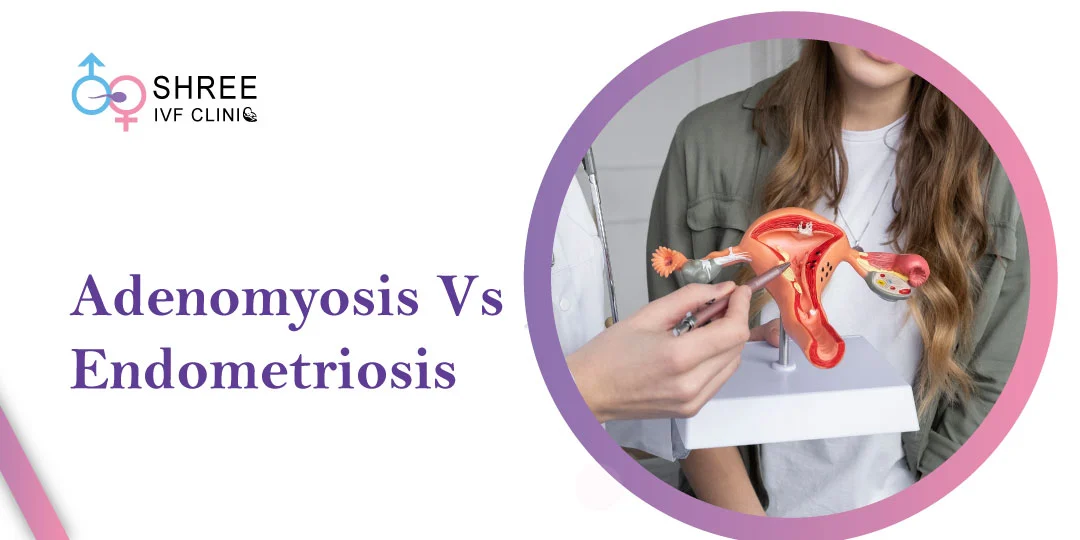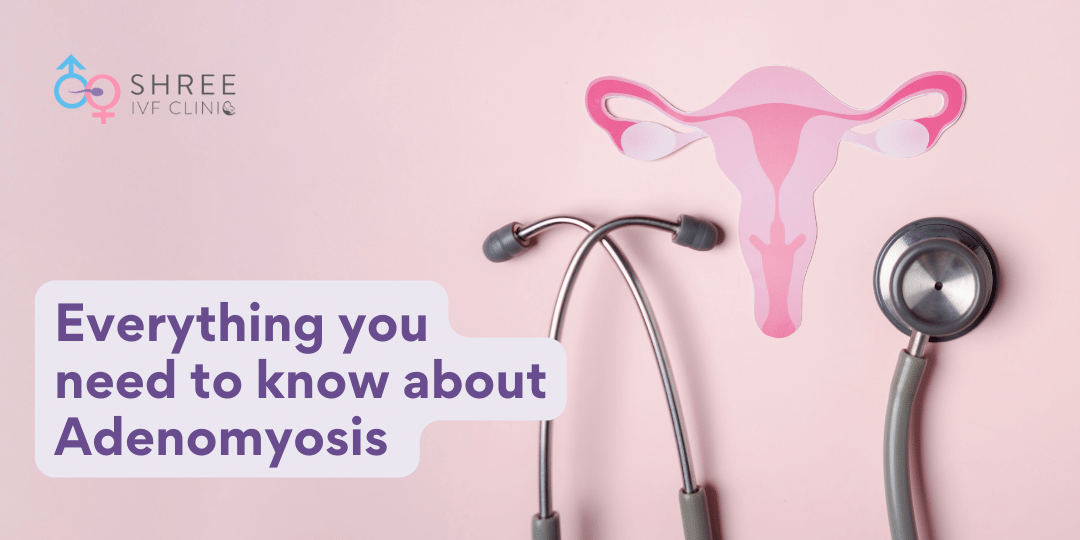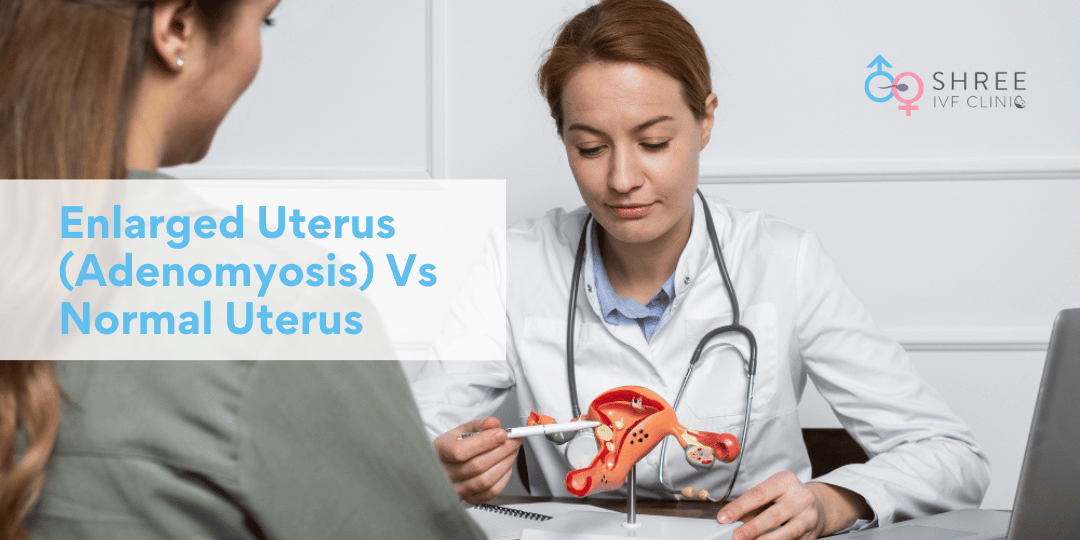Is Adenomyosis of Uterus Benign or Malignant?
UPDATED ON 18TH APR. 2025
Adenomyosis is benign—it’s not cancer and won’t turn into cancer, though it can cause a lot of trouble, like pain and heavy periods.

AUTHOR
Dr Jay Mehta
Scientific Director & IVF Specialist with 10+ years of experience
CONDITION
GET IN TOUCH ON
I’m Dr. Jay Mehta, an expert endometriosis and gynaec surgeon at Shree IVF Clinic in Mumbai, and I’ve helped many women like you who are dealing with adenomyosis and feeling unsure about what it means for their health or dreams of having a baby.
I know it’s confusing with all the mixed info out there, and you might be worried about what’s happening in your body.
In this article, I’ll explain what adenomyosis is, why it’s not dangerous in a cancerous way, how it affects you, and what we can do about it. You’ll get all the facts, some real insights from my clinic, and steps to feel in control—all in one place.
No need to search endlessly—I’m here to guide you. Let’s get started!
What Is Adenomyosis?
Picture your uterus (womb) as a soft, hollow ball with a smooth lining inside—like a cosy blanket where a baby can grow. Every month, this blanket thickens to get ready for a pregnancy, and if no baby comes, it sheds as your period.
Adenomyosis is when bits of this blanket start growing into the muscle wall of the uterus itself. It’s like the lining is sneaking into the wrong place—still normal tissue, but in a spot it shouldn’t be.
In India, adenomyosis affects about 20-30% of women, often between 30 and 50 years old. It’s not rare, but many don’t realise they have it because the signs—like painful periods or heavy bleeding—can feel like “just how it is.”
For some of you trying to have a baby, it might also make things harder, which is why you’re here asking questions.
Is Adenomyosis Benign or Malignant?
Let’s clear this up: Benign means something isn’t cancer—it’s not harmful in a life-threatening way. Malignant means it’s cancer—dangerous and spreading.
Adenomyosis is 100% benign. It’s not cancer, and it doesn’t turn into cancer.
It’s just your own womb lining growing where it shouldn’t, causing irritation or discomfort, but it stays safe in that sense.
Why the confusion?
Sometimes, the pain or heavy bleeding feels so bad that women worry it’s something worse. Or they hear big words from doctors and think “tumour” means cancer—but here, it’s just extra tissue, not a deadly growth.
Studies—like those from the Journal of Obstetrics and Gynaecology—confirm adenomyosis is a benign condition, even if it acts like a troublemaker.
Why Does Adenomyosis Happen?
We don’t know the exact reason for every case, but here’s what might cause it:
- Hormones: Your body’s hormones—like oestrogen—make the womb lining grow. Too much of this might push it into the muscle.
- Past Pregnancies: Having babies or surgeries (like a C-section) might stir things up inside, letting the lining sneak in.
- Inflammation: Swelling from infections or injuries could play a role, like a scratch that doesn’t heal right.
- Genes: If your mom or sister had it, you might be more likely to get it too.
It’s like a mix of things going off track in your womb, but nothing cancerous—just annoying.
How Does Adenomyosis Affect You?
Even though it’s benign, adenomyosis can make life tough. Here’s what you might notice:
- Painful Periods: Cramps that feel like someone’s squeezing your belly hard—worse than usual.
- Heavy Bleeding: Periods so heavy you’re changing pads every hour or feeling weak.
- Tummy Pain: A dull ache in your lower belly, even when it’s not your period.
- Trouble Getting Pregnant: It might make it harder for a baby to stick in the womb or grow properly.
A woman in her late 30s came to me at Shree IVF Clinic Mumbai, scared because her periods were unbearable and she’d had two miscarriages. We did a scan and found adenomyosis. She thought it might be cancer, but I reassured her—it’s benign. We treated it, and she’s now expecting. Her worry was real, but the condition wasn’t malignant.
Why Isn’t Adenomyosis Cancer?
Cancer grows fast, spreads to other parts, and damages your body. Adenomyosis doesn’t do that. It’s your own womb tissue—not some alien invader—just misplaced.
It stays in the uterus, doesn’t travel, and doesn’t turn bad. Think of it like a weed in your garden—it’s pesky but not poisonous.
Research backs this—adenomyosis has no link to uterine cancer. Even if your womb gets big or sore, it’s not a sign of malignancy, just the muscle reacting to the extra lining.
Can Adenomyosis Cause Other Problems?
Yes, it’s benign but not harmless in terms of how you feel:
- Fertility Issues: It might mess with the womb’s ability to hold a pregnancy—studies show up to 20-30% of women with adenomyosis struggle to conceive or lose pregnancies.
- Anaemia: Heavy bleeding can lower your blood levels, making you tired or dizzy.
- Daily Life: Pain might stop you from working or enjoying time with family.
It’s not life-threatening, but it’s not something to ignore either—I’ve seen how it wears women down.

4,790+
379K+
How Do We Find Out If You Have Adenomyosis?
If you’re facing these troubles, I’ll check what’s going on.
- Your Symptoms: Tell me about your periods—pain, heaviness, anything odd.
- Ultrasound: A scan to look inside your womb—adenomyosis often makes it look thicker or uneven.
- MRI: A clearer picture if the scan isn’t sure—it’s like a super camera for your belly.
- Laparoscopy: A tiny camera through a small cut to peek inside—rarely needed, but I’m trained for it.
Once we know it’s adenomyosis, we can stop worrying about cancer and focus on helping you feel better.
What Can We Do About Adenomyosis?
Good news—it’s manageable! Here’s how we can tackle it:
- Painkillers: Simple tablets like ibuprofen ease cramps and lighten your load.
- Hormone Medicines: Pills or a small device in your womb (like Mirena) can shrink the extra lining and cut bleeding.
- Surgery: If it’s bad, we can remove the patches with a small operation (laparoscopy)—I specialise in this—or, if you’re done having kids, take out the womb (hysterectomy).
- IVF: If you want a baby, we can try IVF—success rates at Shree IVF Clinic are 40-50% per cycle, even with adenomyosis.
A patient in her 40s had heavy bleeding and couldn’t conceive. Scans showed adenomyosis. We tried hormones first, then IVF—she’s now a mom. It’s benign, but we still had to act to meet her goals.
Does Adenomyosis Affect Pregnancy?
If you’re trying for a baby, adenomyosis might make it tougher:
- Harder to Conceive: The womb might not grab the baby-to-be well.
- Miscarriage Risk: Studies show a 20-30% higher chance of loss—because the womb gets twitchy.
- Delivery Issues: Rarely, it might lead to early birth or bleeding after.
But many women with adenomyosis have healthy babies—we just need to plan carefully.
How Can You Help Yourself?
You’ve got some power here:
- Track Symptoms: Note your pain or bleeding—bring it to me.
- Eat Well: Dal, sabzi, and fruits keep your energy up—anaemia’s no fun.
- Stay Active: A walk or yoga can ease pain and stress.
- Rest: Don’t push through cramps—give your body a break.
Checklist for Today:
- Write down your last period’s details.
- Add spinach or an apple to dinner.
- Try a 10-minute walk tonight.
When Should You See Me?
If your periods are unbearable, you’re bleeding too much, or you’re struggling to have a baby, don’t wait. Come to me at Shree IVF Clinic—I’ll check if it’s adenomyosis or something else and sort it out with you.
I know adenomyosis isn’t just physical—it’s emotional too. Pain and fertility worries can feel heavy. You’re not alone—talk to your husband, a friend, or me. I’ve seen women come through this, and I’m here to lift you up.
Why Trust Me at Shree IVF Clinic?
I’ve been treating adenomyosis and helping women conceive for over a decade in Mumbai. At Shree IVF Clinic, we use the best tools—like 3D laparoscopy—and a caring approach. Whether it’s easing pain or planning a baby, I’ll guide you with clear, honest advice.
Your Next Steps: Let’s Take Control
Here’s what you can do now:
- Spot Signs: Heavy periods or pain? Time to check.
- Reach Out: Call me at Shree IVF Clinic (shreeivfclinic.com)—let’s talk it over.
- Start Small: Try one healthy habit today—like extra water.
- Ask Questions: Got doubts? I’ll answer them all.
You’re here because you want answers, and I’m here to give them. This article’s got everything—facts, options, and support—no need to look elsewhere. Still unsure? Let’s chat—I’ll make it easy and help you move forward.
AUTHOR
Dr Jay Mehta
Scientific Director & IVF Specialist with 10+ years of experience
CONDITION
CALL US 24/7 FOR ANY HELP
GET IN TOUCH ON
Share Article on
Recommended Reading
Difference Between Adenomyosis and Endometriosis
Endometriosis causes tissue to grow outside the uterus, while adenomyosis leads to growth within the uterine muscle
What Causes Adenomyosis? Guide to Causes, Diagnosis & Treatments Available
Demystifing Adenomyosis, providing an in-depth overview of its causes, diagnosis, and treatment options through this article. learn more.
Understanding Enlarged Uterus vs Normal Uterus
This article helps you understand the difference between an enlarged uterus vs normal normal-sized along with its signs & symptoms




